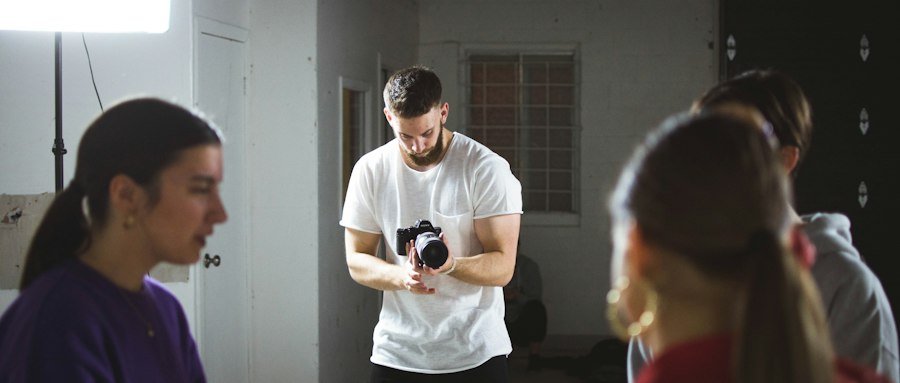

Norwegian for Theatre Lovers: 15 Key Phrases
Language plays a crucial role in the world of theatre. It allows actors to communicate their emotions and thoughts, helps the audience understand the story being told, and creates a connection between performers and spectators. For theatre lovers who are interested in exploring different cultures and languages, learning key phrases in the language of the theatre they are interested in can enhance their experience and deepen their understanding of the art form.
Norwegian, the official language of Norway, is a fascinating language with a rich history and vibrant theatre culture. Norway has a long tradition of theatre, dating back to the 19th century, and has produced renowned playwrights such as Henrik Ibsen and Jon Fosse. Learning Norwegian can provide theatre enthusiasts with a unique insight into Norwegian theatre culture and allow them to fully appreciate the performances they attend.
Table of Contents
ToggleKey Takeaways
- Learning key phrases in Norwegian can enhance the theatre experience for enthusiasts.
- Basic Norwegian pronunciation guide can help in correctly pronouncing the phrases.
- Greetings and introductions are important in Norwegian theatre culture.
- Ordering food and drinks in Norwegian can be a part of the theatre experience.
- Common phrases for interacting with theatre staff can help in navigating the theatre.
The Importance of Learning Key Phrases for Theatre Enthusiasts
Learning key phrases in the language of the theatre you are interested in is important for several reasons. Firstly, it allows you to better understand and appreciate the performances you attend. By understanding the language being spoken on stage, you can pick up on nuances, wordplay, and cultural references that may be lost in translation. This deeper understanding can enhance your enjoyment of the performance and allow you to fully engage with the story being told.
Secondly, learning key phrases can help you navigate the theatre environment more easily. Whether it’s ordering food and drinks at the theatre bar or interacting with theatre staff, knowing a few basic phrases can make your experience more enjoyable and stress-free. It also shows respect for the local culture and language, which can be appreciated by both performers and fellow audience members.
Some key phrases that are commonly used in Norwegian theatre include:
– “Takk for en flott forestilling” (Thank you for a great performance)
– “Kan jeg få programmet?” (Can I have the program?)
– “Hvor er toalettet?” (Where is the restroom?)
– “Kan jeg ta et bilde?” (Can I take a picture?)
– “Hva heter skuespilleren?” (What is the actor’s name?)
Basic Norwegian Pronunciation Guide
The Norwegian alphabet consists of 29 letters, including three additional letters – æ, ø, and å – that are not found in the English alphabet. Understanding the pronunciation rules of Norwegian can help you improve your speaking skills and make yourself understood more easily.
Here are some tips for improving your Norwegian pronunciation:
1. Pay attention to vowel sounds: Norwegian has a number of vowel sounds that may be unfamiliar to English speakers. Practice pronouncing words with different vowel sounds to improve your pronunciation.
2. Focus on consonant clusters: Norwegian has many words with consonant clusters, which can be challenging for non-native speakers. Practice pronouncing these clusters slowly and gradually increase your speed.
3. Listen to native speakers: One of the best ways to improve your pronunciation is to listen to native speakers. Watch Norwegian theatre performances or listen to recordings of Norwegian actors to get a feel for the rhythm and intonation of the language.
4. Practice speaking aloud: The more you practice speaking Norwegian aloud, the more comfortable you will become with the language. Find a language partner or join a language exchange group to practice speaking with others.
Greetings and Introductions in Norwegian Theatre Culture
In Norwegian theatre culture, it is important to greet and introduce yourself properly. This shows respect for the performers and creates a friendly atmosphere in the theatre.
Common greetings and introductions used in Norwegian theatre include:
– “Hei” (Hello)
– “God kveld” (Good evening)
– “Jeg heter [name]” (My name is [name])
– “Hyggelig å møte deg” (Nice to meet you)
– “Hvordan har du det?” (How are you?)
Proper etiquette in Norwegian theatre culture also includes being mindful of others and maintaining a respectful atmosphere. It is important to arrive on time, turn off your phone, and avoid talking or making noise during the performance. By following these guidelines, you can ensure a pleasant experience for yourself and those around you.
Ordering Food and Drinks at the Theatre in Norwegian
When attending a theatre performance in Norway, you may want to order food and drinks at the theatre bar before or during the show. Knowing some basic vocabulary can help you navigate the menu and place your order with ease.
Here are some useful phrases for ordering food and drinks in Norwegian:
– “Jeg vil gjerne ha en kopp kaffe” (I would like a cup of coffee)
– “Kan jeg få en øl, takk?” (Can I have a beer, please?)
– “Har dere vegetaralternativer?” (Do you have vegetarian options?)
– “Hva er dagens suppe?” (What is the soup of the day?)
– “Kan jeg få regningen?” (Can I have the bill?)
When ordering, it is important to be polite and use “takk” (thank you) to show your appreciation. It is also helpful to familiarize yourself with common Norwegian dishes and drinks so that you can make informed choices when ordering.
Common Phrases for Interacting with Theatre Staff in Norwegian

Interacting with theatre staff in Norwegian can be helpful if you have any questions or need assistance during your visit. Knowing some basic vocabulary can make it easier to communicate your needs and ensure a smooth experience.
Here are some common phrases for interacting with theatre staff in Norwegian:
– “Unnskyld, hvor er garderoben?” (Excuse me, where is the cloakroom?)
– “Kan du hjelpe meg med å finne setet mitt?” (Can you help me find my seat?)
– “Er det noen ledige billetter?” (Are there any available tickets?)
– “Kan jeg få et program?” (Can I have a program?)
– “Tusen takk for hjelpen” (Thank you very much for your help)
By using these phrases, you can easily communicate with theatre staff and ensure that your needs are met during your visit.
Expressing Emotions and Reactions in Norwegian Theatre
When attending a theatre performance, it is common to have emotional reactions and want to express them. Knowing how to express your emotions in Norwegian can help you connect with the performance and engage with the story being told.
Here are some vocabulary words and phrases for expressing emotions and reactions in Norwegian:
– “Jeg er rørt” (I am moved)
– “Dette er fantastisk” (This is fantastic)
– “Jeg er imponert” (I am impressed)
– “Dette er morsomt” (This is funny)
– “Jeg er skuffet” (I am disappointed)
By using these phrases, you can communicate your emotions and reactions to the performers and fellow audience members, creating a shared experience.
Understanding Norwegian Theatre Directions and Instructions
Understanding directions and instructions in Norwegian theatre can be helpful when navigating the venue or following the rules of the performance. Knowing some basic vocabulary can make it easier to understand and follow directions.
Here are some common phrases for understanding directions and instructions in Norwegian theatre:
– “Garderoben er til venstre” (The cloakroom is on the left)
– “Setene er nummerert” (The seats are numbered)
– “Mobiltelefoner må være avslått under forestillingen” (Mobile phones must be turned off during the performance)
– “Ingen fotografering eller filming tillatt” (No photography or filming allowed)
– “Nødutgangen er bak scenen” (The emergency exit is behind the stage)
By understanding and following these directions and instructions, you can ensure a safe and enjoyable experience at the theatre.
Vocabulary for Discussing Norwegian Theatre Performances
When discussing a Norwegian theatre performance, it can be helpful to have a vocabulary for discussing the plot, characters, and themes of the play. This allows you to engage in conversations with fellow theatre enthusiasts and share your thoughts and opinions.
Here are some vocabulary words and phrases for discussing Norwegian theatre performances:
– “Handlingen” (The plot)
– “Skuespillerne” (The actors)
– “Scenografien” (The set design)
– “Tematikken” (The themes)
– “Regissørens tolkning” (The director’s interpretation)
By using these phrases, you can engage in meaningful discussions about Norwegian theatre performances and share your insights with others.
Tips for Practicing and Improving Your Norwegian Theatre Language Skills
To improve your Norwegian language skills for the theatre, it is important to practice outside of the theatre environment. Here are some tips for practicing and improving your Norwegian theatre language skills:
1. Watch Norwegian theatre performances: Watching Norwegian theatre performances, either in person or online, can help you familiarize yourself with the language and immerse yourself in the culture.
2. Read Norwegian plays: Reading plays by Norwegian playwrights can help you improve your vocabulary and understanding of the language. Look for translations or bilingual editions to make it easier to follow along.
3. Take language classes: Enrolling in a Norwegian language class can provide you with structured learning and opportunities to practice speaking with others.
4. Find a language partner: Finding a language partner who is a native Norwegian speaker can help you practice speaking and improve your pronunciation.
5. Visit Norway: Immersing yourself in Norwegian theatre culture by visiting Norway can provide you with an authentic experience and opportunities to practice your language skills.
By following these tips, you can continue to improve your Norwegian theatre language skills and deepen your appreciation for Norwegian theatre culture.

Norwegian A1-A2
Course Overview The Norwegian A1-A2 course is an online program focused on teaching essential Norwegian grammar and vocabulary. It includes a variety of materials and topics, with opportunities to interact with a Norwegian teacher entirely online. Curriculum Highlights The course covers key areas such as grammar and vocabulary and topics such as family, daily life, education, work, traditions, and leisure activities. Who Should Enroll? This course is perfect for beginners or those at the A1 or A2 levels who want to improve their Norwegian skills. What You Get Access to the full Norwegian A1-A2 course. A monthly 1-hour online conversation with a teacher. Many written and oral assignments. Comprehensive information on Norwegian grammar, Norwegian vocabulary and how to use them, important sentence structures, etc. Tips on additional resources to further enhance your Norwegian learning.
0 students enrolled
Last updated Dec 10th, 2024
If you want to learn Norwegian, you can register for classes here. We look forward to hearing from you and helping you become fluent in Norwegian.






